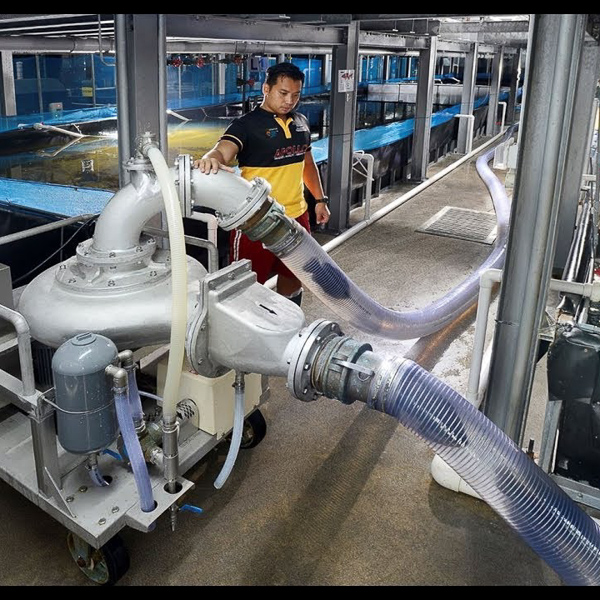The cost of farming fish on land
Replicating the ocean environment in concrete tanks will increase greenhouse gas emissions and have significant environmental consequences
By SeaWestNews
A new report led by the Norwegian University of Science and Technology (NTNU) in cooperation with research institute Sintef Ocean puts production costs for land based grow-out 42 percent higher than those in the sea. According to Tekfish, the analysis finds that a transition from sea to land based farming in Norway requires 11,700 hectares’ vs 4,238 square kilometers at sea plus 520 million cubic meters of water for recirculating aquaculture systems. The study was based on a production of 1.3 million metric tons of fish and a production capacity of 10,000 metric tons per year per farm (130 farms). It also puts production costs in Norway at an estimated NOK 43.60 (€4.62/US$5.34) per kilo against sea farming’s estimated NOK 30.60 (€3.24/US $3.75) per kilo.
The numbers reflect a similar story in British Columbia, where there is a renewed push to get salmon farming out of the oceans and onto land operations. This, despite several unsuccessful attempts to grow either Pacific or Atlantic salmon in land-based recirculating aquaculture systems (RAS) over the past 20 years, as pointed out by Business in Vancouver. One of those operations is Kuterra, a land-based aquaculture operation in BC, which got about six million dollars of federal funding. Businessmen and the Namgis First Nations behind Kuterra are now seeking more government funds and investors to resuscitate their operations.
“Raising more salmon on land to complement sustainable ocean-based farming is part of the answer but raising large numbers of fish on land hasn’t yet been accomplished anywhere in the world, and trying to make that move would have significant environmental consequences,” said John Paul Fraser, the executive director of the B.C. Salmon Farmers Association.
“Replicating that natural environment in concrete tanks would require huge amounts of electricity, increasing greenhouse gas emissions,” he said. “We need to responsibly consider consequences like this before we latch on to a solution in search of a problem that doesn’t exist.
Our opportunity is in front of us — to raise fish off our coast — responsibly, sustainably, and in consultation and growing partnership with First Nations and other communities,” said Fraser.
Here are five things you need to know about salmon farming on land vs salmon farming in the oceans;
Related Links:

